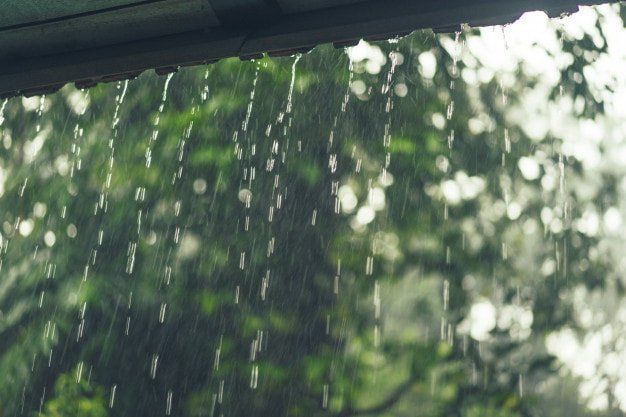Impermeabilización-
Washington, DC
¿Cuándo necesita los servicios de impermeabilización?
La impermeabilización es una práctica para evitar que una construcción o material artificial se empape o sea resistente a la penetración del agua. Estos materiales se pueden utilizar en ambientes húmedos, fríos o húmedos en varios grados. Se utilizan para la construcción de cimientos, paredes y techos, así como para vehículos, maquinaria, electrodomésticos, muebles y pertenencias personales. Es un proceso crucial y, por lo tanto, debe ser realizado por profesionales capacitados. Un sótano húmedo requiere una gran impermeabilización para evitar el crecimiento de moho, hongos y otros alérgenos.
La impermeabilización no solo evita los impactos ambientales adversos en su edificio o establecimiento, sino que también promueve la seguridad de los ocupantes y la infraestructura. Además, el atractivo estético de una casa también depende de su capacidad para soportar condiciones climáticas adversas. Los sótanos húmedos, por ejemplo, deben impermeabilizarse para evitar el crecimiento de moho, musgo, hongos y algas, que eventualmente podrían arruinar el aspecto de su propiedad. Además, la impermeabilización evita la aparición de fugas y el posterior daño estructural a los cimientos, paredes y techos.
Hay dos tipos principales de métodos de impermeabilización, a saber: pasivo y activo. La impermeabilización pasiva implica el uso de materiales como lechada, celulosa y betún para crear un sello contra la penetración de líquidos. Puede emplear estos materiales como membrana impermeabilizante líquida (CFLM) o como membrana impermeabilizante cristalina (CPL). Una membrana de betún o una membrana de cemento de fibra de vidrio se compone de dos capas de materiales cementosos unidas por un grueso soporte de plástico.
La impermeabilización activa, sin embargo, implica la excavación del suelo y la construcción de un sellador o capa de materiales cementosos. Luego, esta capa se extiende por el exterior de la estructura. Además de usarse en cimientos, este método también se usa en techos, paredes, tragaluces, puertas, ventanas, terrazas de piscinas y pisos de patios. La instalación del tipo de impermeabilización adecuado es fundamental para garantizar que la estructura sea altamente resistente al agua. Además de prevenir el desarrollo de moho, hongos y algas, también hace que la estructura sea más resistente al fuego.
La impermeabilización de propiedades residenciales a menudo se requiere en áreas donde hay lluvias importantes, alta humedad o incluso exposición constante a la humedad debido a problemas de fosas sépticas, sistemas de riego de jardines, sistemas de rociadores o incluso piscinas. Es posible que la mayoría de los propietarios ya tengan una o varias áreas húmedas en su propiedad.
Desafortunadamente, estas áreas húmedas tienden a atraer alimañas y plagas como gusanos de madera y hormigas, que pueden causar daños importantes a la estructura. Para evitar el crecimiento de estos elementos no deseados, el propietario debe instalar una superficie sólida o una capa de cemento que actúe como una planta de tratamiento de agua en el hogar eficaz.
Los revestimientos de cemento para estas áreas son eficaces para impermeabilizar estas áreas del agua, pero también pueden servir como protección adicional contra la corrosión, la oxidación y la pudrición. Estos recubrimientos se aplicarán sobre un material base (como una superficie sólida o losa de concreto) y se mantendrán en su lugar reforzando materiales impermeabilizantes como malla de acero, caucho, asfalto y concreto. El hormigón se puede verter sobre el material base o se puede dejar secar durante la noche y luego se repavimenta en el material base. Una vez que se combinan las capas de hormigón y de impermeabilización, se impermeabilizará el producto final.
Cuando se trata de un área húmeda de concreto, necesita servicios de impermeabilización en el mejor momento. Por lo general, el mejor momento para impermeabilizar un área húmeda es durante la temporada de lluvias. Sin embargo, si ha estado lloviendo con regularidad, es posible que esto no sea suficiente protección para su hogar. Durante estos períodos, debe considerar la posibilidad de obtener revestimientos especiales para sus paredes exteriores, techos y otras áreas. Los diferentes tipos de revestimientos servirán para proteger tu hogar frente a los diferentes tipos de clima que experimenta.
Como puede ver, existen muchos tipos diferentes de métodos de impermeabilización. Necesita obtener los servicios de profesionales que puedan ayudarlo a obtener la mejor época del año para realizar esta tarea. Si no está seguro de cuándo es el mejor momento para realizar esta tarea, puede comunicarse con un servicio de impermeabilización local para obtener sus recomendaciones. Ellos podrán darle el mejor período de tiempo para completar el trabajo según sus necesidades específicas.
Póngase en contacto con nosotros para obtener más información sobre nuestros servicios. Nuestro equipo está disponible para responder a todas sus preguntas y proporcionarle detalles adicionales sobre cómo podemos ayudarle con sus necesidades de reparación de cimientos y nivelación de paredes. Nos enorgullece ofrecer soluciones personalizadas y estamos aquí para asegurarnos de que reciba la asistencia que necesita. No dude en llamarnos o enviarnos un correo electrónico; estamos listos para ayudarle a mantener su propiedad en las mejores condiciones.

“We thought we needed to install a completely new foundation, but they had some really great other options that were far more affordable and just as durable. We are so happy we called them for help.” – KJ Tomms
Jessica M.

“After seeing them repair our neighbor’s foundation, we decided to give them a call and they handled our work just as well as we expected and we highly recommend them to everyone.” – Sarah U.
Nicole L.

“They are the first and only call we make when we are seeking third party data that is impartial and accurate. They’ve helped us make sound decisions in our construction practices.” – Joey T.
George P.
Waterproofing Your Home - Washington, DC USA
Our basement waterproofing contractors in DC can give you an accurate estimate of how much money it will cost to waterproof your basement, kitchen or home office. The initial expense for waterproofing may not be as much as you think, especially if you are waterproofing your basement for the first time. In addition to having the system installed by a professional contractor, the waterproofing process itself is generally quick and easy. Most basement waterproofing costs are in line with what would be needed to replace interior and exterior walls in a typical situation.
There are various reasons for basement seepage, water leaks, leaky pipes, and excess moisture - some of them are easy to remedy and others require assistance from a skilled professional who also specializes in interior waterproofing. An effective interior waterproofing solution can keep mold, microbial, and structural problems associated with basement moisture from occurring. The majority of interior waterproofing solutions are applied by using a specially-formulated membrane that is applied over the exterior concrete and drains. This membrane is effective at preventing water from seeping into the interior, but it also prevents surface water from draining away from the foundation.
A waterproofing membrane is an effective solution for any area that is below grade, including crawlspaces, bathrooms, laundry rooms, garages, storage facilities, and kitchens. Exterior waterproofing is generally less expensive than interior waterproofing because exterior waterproofing is accomplished by placing a membrane on the exterior wall and bottom drain, or footer drain tile. A footer drain tile is a drain tile that connects to the main sewer main pipe. Both systems serve to remove excess moisture from living spaces and prevent it from entering the basement.
A waterproofing system should be inspected on a regular basis to make sure that it is performing to standards. There are two types of waterproofing systems: exterior waterproofing and basement waterproofing. Exterior waterproofing is accomplished by installing a waterproofing membrane on the outside wall, footer drain tile, or both. Basement waterproofing is achieved by installing a drain tile, a waterproof sheet, or a water-repellant foam under the existing floor drain tiles. These waterproofing systems are often combined with drain tile installation in order to create a more effective waterproofing system.
Some of the most common causes of basement moisture are drainage problems and foundation leaks. These cause water to enter through porous materials such as concrete, which makes it easier for water to move. Poorly maintained drainage systems allow excess water to pool around the house and damage the surrounding structure. Other causes of basement moisture include plant roots growing underneath the soil, clay soil causing increased permeability, tree root rot, and poorly-maintained irrigation systems.
If there are any damp areas inside the house, exterior waterproofing will help stop water from moving into these areas. Exterior waterproofing is accomplished by placing an exterior waterproofing membrane on the outside wall, footers, or both. Basement waterproofing can also be achieved by placing drains in strategic locations around the foundation. A waterproofing agent can be applied directly to the walls to prevent moisture from penetrating the interior of the house. These agents are available in liquid, powder, or granular forms and are designed for use in only one-foot gaps.
Excavation is another key process necessary for waterproofing a basement. Excavation is the process of removing layers of soil surrounding the foundation in preparation for waterproofing the structure. Excavation is done by using hydraulic excavators, high-pressurized equipment, skid machinery, backhoes, or bulldozers. The exterior of the home, including the foundation and interior walls, must be waterproofed before any landscaping or sub-floor installation can occur. Most homeowners hire our professionals to complete this process.
After the structure has been excavated for waterproofing purposes, the soil surrounding the foundation and interior walls must be dried. Once the soil is dry, waterproofing methods are used to repair any water damages. Interior waterproofing methods include spraying foam onto basement walls, footers, ceilings, and windows. Duct sealing is also a popular method of waterproofing interior walls. This method seals the air leaks in the walls and helps prevent water from seeping inside the home.
Load testing is a critical process in engineering that ensures structures can handle expected stress and weight. By simulating real-world conditions, it helps identify potential weaknesses, ensuring safety and reliability.
Más servicios que ofrecemos en las áreas de servicio:


